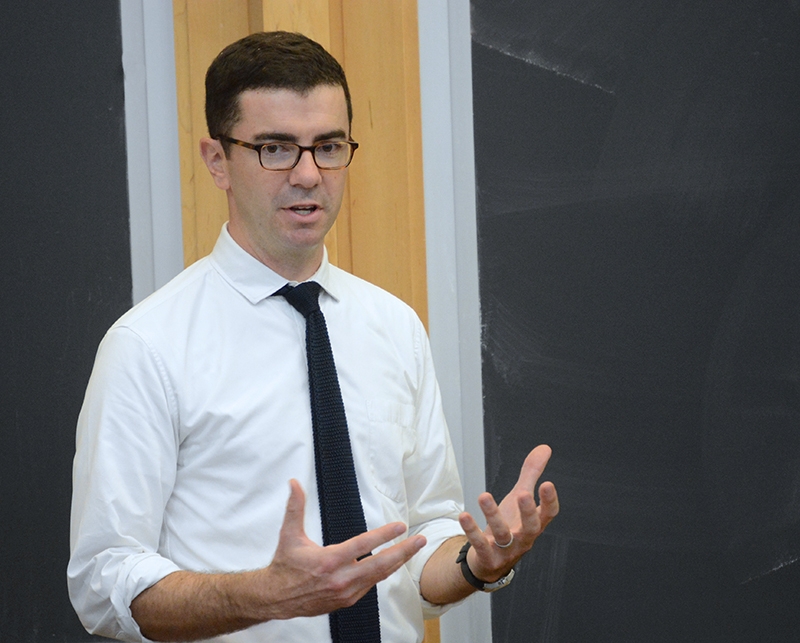Editor Extols the Virtues of Good Reporting

MIDDLEBURY, Vt. – “A disappearing art” is how Ryan D’Agostino characterized reporting, the skill he’s made his life’s work as a writer and now editor at some of the country’s best magazines.
The 1997 Middlebury graduate returned to campus on Nov. 4 and 5 to peel back the curtain on magazine publishing, read from his recently released book, and encourage young writers to hone their reporting skills.
D’Agostino spent eight years as an editor at Esquire before taking the helm as editor in chief at Popular Mechanics in 2014. His Nov. 4 lecture was part of the ongoing “Meet the Press” series, a speaker series headed by author and scholar-in-residence Sue Halpern that brings working journalists to campus.
In his talk titled “How to Be a Reporter: Old Fashioned Journalism in the Digital Age,” D’Agostino said he’s not among the camp of journalists or editors who bemoan the influx of new technology; he views new multimedia tools as an opportunity to expand a magazine’s reach and coverage beyond the confines of 87 pages.
“What can’t get lost in all of that is what we do, which is tell stories,” said D’Agostino.
And the crux of a good story, he argued, is good reporting – a skill that D’Agostino called “the most creative thing you can do as a writer.” Making decisions about which questions to ask, when to tag along a source, or how long to follow a hunch can make or break a story. “It’s creativity under pressure,” said D’Agostino..

D’Agostino edited the Middlebury Campus student newspaper during his time as a student at Middlebury. In his first job out of college, he worked as a reporter at a small newspaper in Connecticut, which he followed with a year as the manager of the band Dispatch. When a student asked D’Agostino about his advice for aspiring writers heading out of college, D’Agostino voted for taking the path less traveled. “Get out there and live a life,” he said.
His advice for reporters boiled down to three pieces: Be creative, be resourceful, and find your piece of the story. Those maxims have been guiding forces in D’Agostino’s own career; they encouraged him to tag along with a disgraced congressman to his upstate New York home in the hours after scandal broke and produce the acclaimed Esquire feature story “Eric Massa’s Secret.”
“If you scratch the surface of any life, there’s a story underneath,” said D’Agostino, who never refuses an extra cup of coffee with a source.
D’Agostino followed his “Meet the Press” lecture with a Nov. 5 reading from his new book, The Rising: Murder, Heartbreak, and the Power of Human Resilience in an American Town.
– With reporting by Kathryn Flagg ‘08 and photos by Robert Keren

